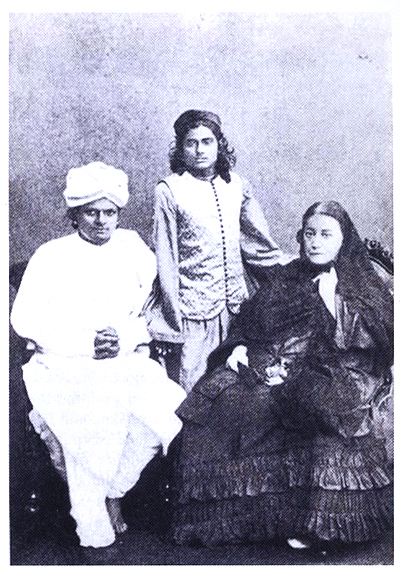Therapeutic Touch Camp Continues via Zoom
Printed in the Fall 2020 issue of Quest magazine.
Citation: Blumenthal-McGannon, Sally, "Therapeutic Touch Camp Continues via Zoom" Quest 108:4, pg 8, 40
By Sally Blumenthal-McGannon
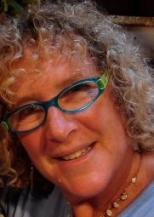 I recently had the privilege and honor of participating in a Therapeutic Touch (TT) camp on Zoom, the web conferencing site. I am not savvy about or comfortable with technology, so imagining this event was challenging for me. Fortunately I have been attending TT workshops at Indralaya from the beginning in the seventies, as well as a few more at Pumpkin Hollow, where I had the opportunity to learn and study with both Dora Kunz and Dolores Krieger, the cofounders of TT.
I recently had the privilege and honor of participating in a Therapeutic Touch (TT) camp on Zoom, the web conferencing site. I am not savvy about or comfortable with technology, so imagining this event was challenging for me. Fortunately I have been attending TT workshops at Indralaya from the beginning in the seventies, as well as a few more at Pumpkin Hollow, where I had the opportunity to learn and study with both Dora Kunz and Dolores Krieger, the cofounders of TT.
Over the years, a group of us have remained very close. Endowed with a variety of skills, we normally hold our healers’ camp yearly at Camp Indralaya on Washington state’s Orcas Island. This year, the virus made this gathering impossible, so we decided to hold the camp online with Zoom. Some of the group had prior experience providing TT with Zoom individually or in small groups.
I am a great believer in healing at a distance and sending healing to others in need. TT is all about energy. There is no need to physically touch the person you are treating. However, if you add technology, you lose me. I have lived in a virgin redwood forest for a long time and have never had good Internet reception. But the desire to participate in TT this summer was so great that other healers came together and figured it out.
While I was glued to the TV, watching the pain and suffering of protests after the murder of George Floyd, I was reading the applications of TT practitioners who wanted to be of service, knew they had something special to offer, and explained why they wanted to attend our virtual camp. I was so touched by their generosity and kindness that the healing from our future gathering had already begun for me. I was reminded of Dora, who urged us to send love and peace to the angels over the cities in distress. This enabled me to shift my focus from suffering to being centered, being of service, and reinforcing what we need in our world during these troubled times. The pandemic was another reason for me to appreciate the power of shifting my awareness and focus on healing.
In addition to all the emails I receive every day, I smile when I see contact from my TT family and know it is about love and healing. And I breathe. The benefit of my TT life and commitment continues to serve me, as I laugh at my original reason for learning Therapeutic Touch, which was to become a better nurse.
Our experiment is over. We held our Indralaya Zoom camp for three days, and it was beyond our greatest expectations (not that the outcome was ever in our hands). I could never have imagined the impact we would have on everyone involved.
We began our mornings with Helen Bee, an Indralaya elder who led morning meditation in the meadow during TT camp. She was actually at the camp, with a camera focused on the meadow, so we could see our safe space and begin our mornings together as we meditated in the meadow.
I was one of the facilitators for the Healing Partners (HP) group, something I have done for many years. As always, we met the evening before, where we had the opportunity to acknowledge what we would need to feel safe as we came together. Many participants knew one another from past summers, so our reunion began by seeing each other face-to-face on Zoom. Newcomers were greeted as well. We began with a welcoming meditation, thanking one another for showing up with a desire to connect with the healing spirit of Indralaya.
The next morning we all came together, over fifty of us, for meditation “in the meadow.” Then we were put in breakout rooms, where individuals received TT treatments from experienced practitioners. A few of us stayed in the main room, holding a safe healing space, available to pop in if someone needed support in a breakout room.
After resting, we met with our group, and HPs (healees) shared their experiences of receiving TT. It was amazing. People’s descriptions resembled those from the live camp. The treatments were just as effective, and sometimes more so. HPs loved the shared intimacy, closeness, and connection with their practitioners—amazingly, all on Zoom.
The first day was my opportunity to set the tone of being open, feeling safe to be vulnerable, and being held with respect and confidentiality. I addressed intimate topics such as grieving, dying, illness, and especially loss during this year of pandemic and social unrest. Naming the fear enables people to address it more easily.
By our afternoon session, HPs were open to sharing their journeys. I shared a page of quotes and had participants each write about one that resonated for them, which led to a deep discussion afterward. Here are some of the quotes they received.
Not everything that can be faced can be changed, but nothing can be changed that is not faced. —James Baldwin
There’s nothing as whole as a broken heart. In these traditions, you cultivate a broken heart, which is very different from depression or sadness. It's the kind of vulnerability, openness, and acute sensitivity to your own suffering and the suffering of others that becomes an opportunity for connection. —Rebbe Nachman of Breslov
As long as I’m alive, I will continue to try to understand more, because the work of the heart is never done. —Muhammad Ali
Laughter is not only carbonated holiness: it is medicine. —Anne Lamott
Everything will be OK in the end. If it’s not OK, it’s not the end. —John Lennon
Sorrow is how we learn to love. —Rita Mae Brown
My humanity is bound up in yours, for we can only be human together. —Desmond Tutu
Willing to experience aloneness, I discover connection everywhere; turning to face my fear, I meet the warrior who lives within. —Jennifer Welwood
I think it pisses God off if you walk by the color purple in a field somewhere and don’t notice it. —Alice Walker
When there’s a big disappointment, we don't know if that's the end of the story. It may just be the beginning of a great adventure. —Pema Chödrön
Your present circumstances don't determine where you can go; they merely determine where you start. —Nido Qubein
How did the rose ever open its heart and give this world all its beauty? It felt the encouragement of light against its being; Otherwise we all remain too frightened. —Hafiz
The universe is wider than our views of it. —Henry David Thoreau
What we have before us are some breathtaking opportunities disguised as insoluble problems. —John W. Gardner
Receiving TT brings new energy, as the healee opens up and lets go of old pain, emotional and physical (if it is time for that). Sharing their chosen quote allowed participants to go deeper into their experience, feeling understood and supported.
The group experience was profound. I reminded people that we are all mirrors and that they might hear their own thoughts or feelings being expressed by another. There is a cumulative effect of TT, which grows over the days and continues after camp is over.
The connections and sharing, the risk taking and vulnerability, is profound. Each gathering builds on the past, and by the end of camp, we were an amazingly close group of people, who felt safe and held with respect and kindness, some on a level never perceived before.
We had a follow-up gathering a week later to check in and validate peoples’ experiences. Three of us led this group. I had wanted to remind the healees that when we parted last week, it was ending, but that every ending is also a beginning and how joyous it would be to share some of their new world.
What we heard was profound. Many recognized the timeliness of our gathering. Before it began, no one knew that our country was going to break open with such overt pain and vulnerability. The timing was impeccable and, again, out of our hands.
Below are some comments from participants.
“How timely for us to hold camp in the world right now. It was profound, and I got to experience BLM with a dose of Zoom and hope.”
“The bubble of safety, kindness, and support has stayed with me.”
“I learned how connected we are energetically.”
”My heart took a leap when I saw this group today.”
“I am transforming and figuring out how to protect myself (often from myself), having experienced such absence of judgment during TT.”
From someone who was deep in a grief state and sadness: “I now see my home as a sad bubble, outside of me when I finally went out (and my sadness), and I am ready to make changes since I have changed. I have found a way to stay connected with my husband with love, not pain.”
“I’m grieving, everything is changing, energy started moving.”
This Zoom retreat has allowed us to connect with each other, ourselves, and the higher/inner power that connects us all and nature. I am left with greater awareness of our oneness and our innate healing power, which enable us to move forward during these challenging times. The healing will continue in each of us as we go out into the world. Knowing we have something to offer during these troubling transformative times is profound and humbling.
Sally Blumenthal-McGannon, MFT, RN, is a nurse, therapist, and Theosophist who has been studying Therapeutic Touch since 1976. She has started a hospice, been the Santa Cruz County AIDS Coordinator, and served as adjunct faculty at Santa Clara University, and has a private practice. She is presently writing a book called The Joy of Dying.


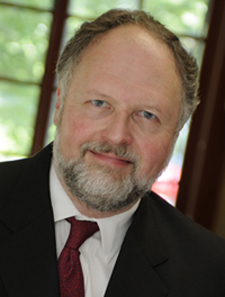 Cherry Gilchrist’s image of a ruined city on a riverbank in this issue reminds me of some thoughts I put into my book How God Became God: What Scholars Are Really Saying about God and the Bible.
Cherry Gilchrist’s image of a ruined city on a riverbank in this issue reminds me of some thoughts I put into my book How God Became God: What Scholars Are Really Saying about God and the Bible.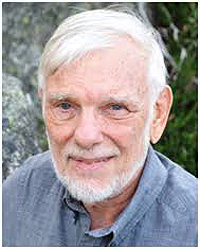 I earned a PhD in evolutionary biology at a major Midwestern university. Later I was introduced to Theosophy. I was distraught to learn that some evolutionary concepts as understood by Theosophy differed widely from contemporary scientific fact and theory. This contentious material was prominently featured in The Secret Doctrine. I was particularly concerned with the elaborate narratives concerning human evolution in earlier Root Races, which read like children’s stories. The chasm separating evolution as understood by biology and anthropology and that in The Secret Doctrine continues to widen, and the two versions seem irreconcilable.
I earned a PhD in evolutionary biology at a major Midwestern university. Later I was introduced to Theosophy. I was distraught to learn that some evolutionary concepts as understood by Theosophy differed widely from contemporary scientific fact and theory. This contentious material was prominently featured in The Secret Doctrine. I was particularly concerned with the elaborate narratives concerning human evolution in earlier Root Races, which read like children’s stories. The chasm separating evolution as understood by biology and anthropology and that in The Secret Doctrine continues to widen, and the two versions seem irreconcilable.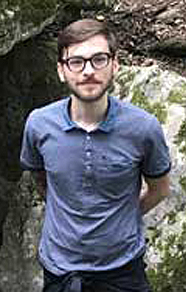 Many seekers today set out on their paths to find something that society is not giving them. In the face of ecological destruction, unflinching individualism, and a general sense of separation and desperation, people are looking for something not quite so tragic as what is currently on the table. Religion and its close cousin, literature, are the great resources in the human search for dignity and meaning. Myth, poetry, and drama can be powerful pathfinders out of this seemingly modern malaise, because they tell us that this search for something more is not ours alone but is woven into the fabric of human existence.
Many seekers today set out on their paths to find something that society is not giving them. In the face of ecological destruction, unflinching individualism, and a general sense of separation and desperation, people are looking for something not quite so tragic as what is currently on the table. Religion and its close cousin, literature, are the great resources in the human search for dignity and meaning. Myth, poetry, and drama can be powerful pathfinders out of this seemingly modern malaise, because they tell us that this search for something more is not ours alone but is woven into the fabric of human existence.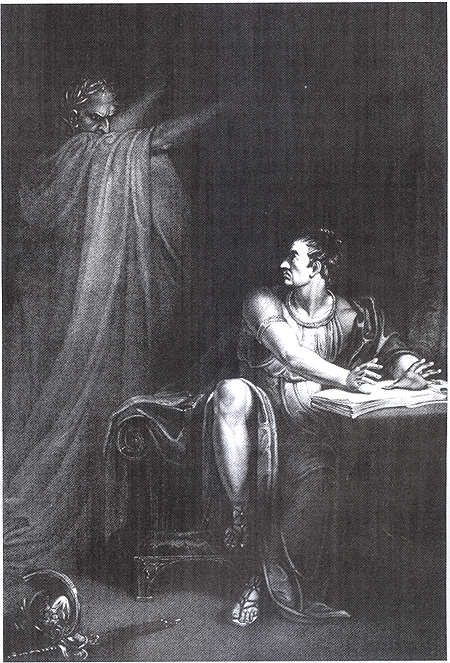
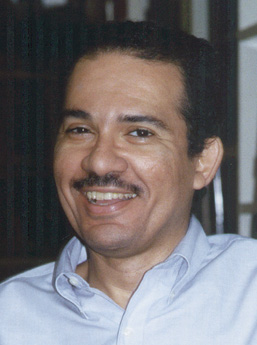 At its inception in 1875, the object of the Theosophical Society was “to collect and diffuse a knowledge of the laws which govern the universe.” It was not an attempt to replicate what was already being done but to investigate areas left unexplored at the time. When the headquarters of the Society was established in India in the 1880s, the Objects began to look more as they do today. Only the Second Object was markedly different from how it now stands: “To promote the study of Aryan and other Eastern literature, religions and sciences and vindicate its importance.” It remained that way during H.P. Blavatsky’s lifetime, only changing in 1896 to its current injunction to encourage the study of comparative religion, philosophy, and science.
At its inception in 1875, the object of the Theosophical Society was “to collect and diffuse a knowledge of the laws which govern the universe.” It was not an attempt to replicate what was already being done but to investigate areas left unexplored at the time. When the headquarters of the Society was established in India in the 1880s, the Objects began to look more as they do today. Only the Second Object was markedly different from how it now stands: “To promote the study of Aryan and other Eastern literature, religions and sciences and vindicate its importance.” It remained that way during H.P. Blavatsky’s lifetime, only changing in 1896 to its current injunction to encourage the study of comparative religion, philosophy, and science.